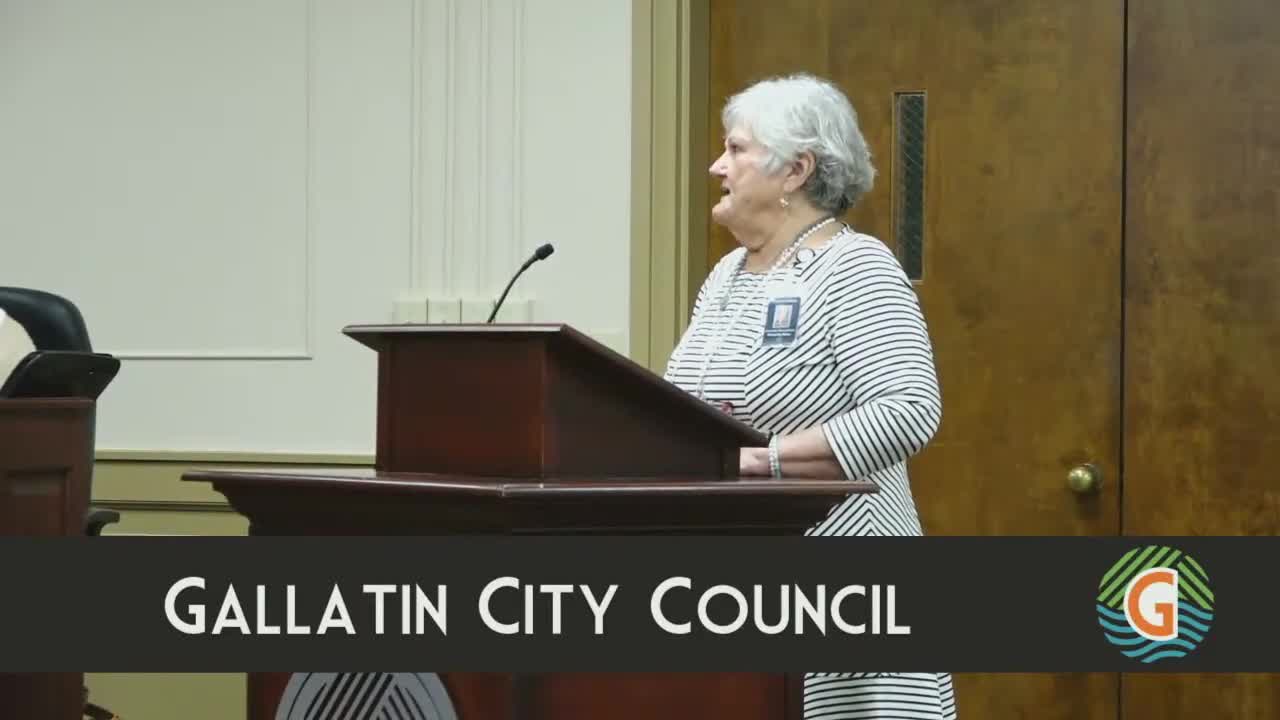Downtown Project Phoenix moves to schematic design after limited public feedback; parking, infrastructure top concerns
October 29, 2025 | Gallatin City , Sumner County, Tennessee
This article was created by AI summarizing key points discussed. AI makes mistakes, so for full details and context, please refer to the video of the full meeting. Please report any errors so we can fix them. Report an error »

Representatives for the Project Phoenix redevelopment told the City Council Committee they completed a round of downtown stakeholder meetings and a public forum and will proceed to schematic design and civil-engineering due diligence.
Boyle’s team held a downtown stakeholders meeting in late September, a public meeting on Oct. 14 and distributed a short online survey that attracted about 48–50 responses from frequent downtown users, business owners and property owners. Project leads said the outreach was required by a restated memorandum of understanding with the city and intended to inform architectural massing, parking strategy and program mix before schematic drawings.
Key takeaways from Boyle’s presentation:
- Participants ranked traffic flow and congestion, construction impacts and parking-supply management as the top technical concerns that would shape detailed engineering and phasing.
- Stakeholders preferred new development that maintains traditional downtown streetscape character; many respondents preferred designs that fit Gallatin’s existing scale rather than very tall/massive buildings.
- Boyle’s conceptual work includes two parking garages: a possible subterranean garage on Block A (~275 spaces) and a larger garage on Block B (~400 spaces). Responses indicated differing views about how much the public would actually use garages and how to activate them.
Rosemary Bates, the city’s economic development director, and Boyle representatives said the next steps are civil engineering due diligence (stormwater, utilities), schematic design (about a two-month process) and continued outreach to adjacent property owners. Boyle also said it will coordinate with city planning and engineering to assess infrastructure impacts and phasing.
Why it matters: Project Phoenix is a high-profile downtown redevelopment that could add units and parking downtown and influence the look and function of the square. Early public comments focus on feasible impacts — traffic, construction disruptions and parking availability — rather than architectural style alone.
What happens next: Boyle’s team will begin schematic design and further civil engineering work; the city and developer will continue stakeholder outreach and coordinate timing for development plans to be filed in early 2026.
Boyle’s team held a downtown stakeholders meeting in late September, a public meeting on Oct. 14 and distributed a short online survey that attracted about 48–50 responses from frequent downtown users, business owners and property owners. Project leads said the outreach was required by a restated memorandum of understanding with the city and intended to inform architectural massing, parking strategy and program mix before schematic drawings.
Key takeaways from Boyle’s presentation:
- Participants ranked traffic flow and congestion, construction impacts and parking-supply management as the top technical concerns that would shape detailed engineering and phasing.
- Stakeholders preferred new development that maintains traditional downtown streetscape character; many respondents preferred designs that fit Gallatin’s existing scale rather than very tall/massive buildings.
- Boyle’s conceptual work includes two parking garages: a possible subterranean garage on Block A (~275 spaces) and a larger garage on Block B (~400 spaces). Responses indicated differing views about how much the public would actually use garages and how to activate them.
Rosemary Bates, the city’s economic development director, and Boyle representatives said the next steps are civil engineering due diligence (stormwater, utilities), schematic design (about a two-month process) and continued outreach to adjacent property owners. Boyle also said it will coordinate with city planning and engineering to assess infrastructure impacts and phasing.
Why it matters: Project Phoenix is a high-profile downtown redevelopment that could add units and parking downtown and influence the look and function of the square. Early public comments focus on feasible impacts — traffic, construction disruptions and parking availability — rather than architectural style alone.
What happens next: Boyle’s team will begin schematic design and further civil engineering work; the city and developer will continue stakeholder outreach and coordinate timing for development plans to be filed in early 2026.
View the Full Meeting & All Its Details
This article offers just a summary. Unlock complete video, transcripts, and insights as a Founder Member.
✓
Watch full, unedited meeting videos
✓
Search every word spoken in unlimited transcripts
✓
AI summaries & real-time alerts (all government levels)
✓
Permanent access to expanding government content
30-day money-back guarantee

